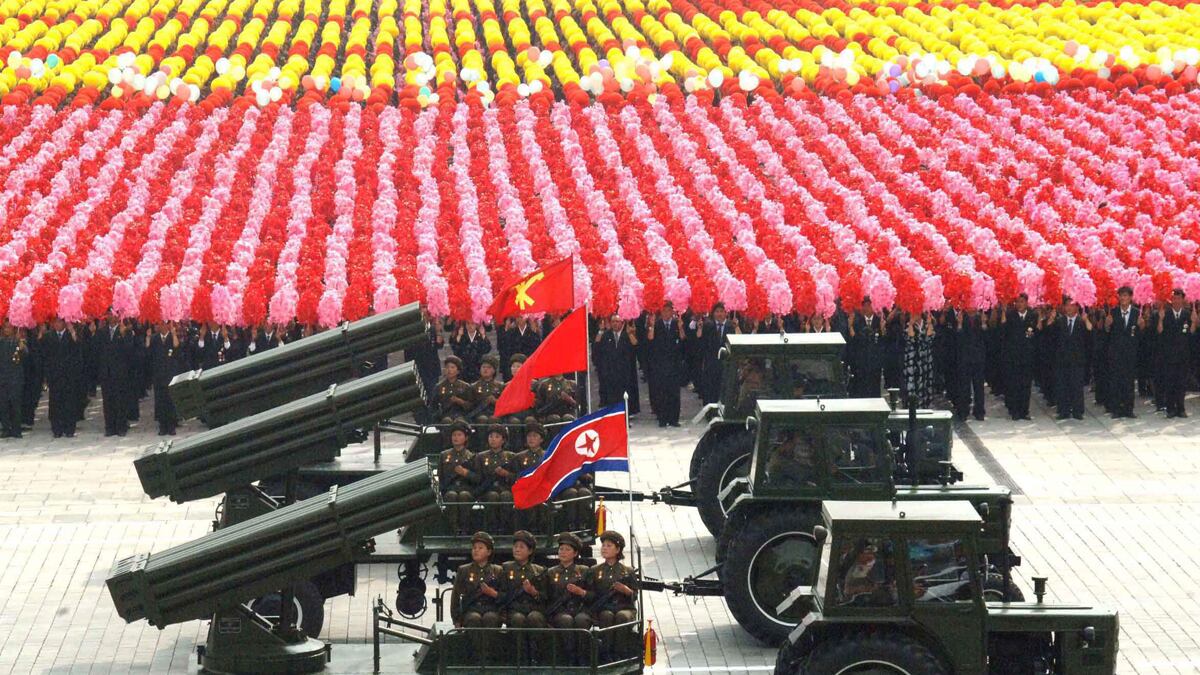As soon as news broke Monday on the death of North Korean leader Kim Jong-il, governments in East Asia scrambled into crisis mode to prepare for reckless provocations from the opaque and bellicose nuclear state. Both South Korea and Japan convened emergency government meetings to prepare for contingencies—Seoul beefed up surveillance along its border; Tokyo also put its coast guard on high alert.
But a military provocation, at least in the short term, is unlikely. For one thing, the North Koreans will be too busy mourning the death of their Dear Leader (a state funeral is scheduled on Dec. 28). And North Korea’s military may be belligerent, but they’re not suicidal. The North Korean military test-fired two short-range missiles into the Sea of Japan on Monday, but the South Korea’s Defense Ministry says that the launch was planned for before, and that there’s no connection to Kim Jong-il’s death. Washington and Tokyo issued statements calling for stability and restraint on the Korean Peninsula—a statement directed not only to Pyongyang, but likely to Seoul as well—to restrain the South Korean government from taking aggressive measures that could instigate the North, which is infamous for using strong statements from the U.S., South Korea, and Japan as an excuse to take further provocative and escalatory reactions.
The oft-speculated nightmare scenario is that the death of the Dear Leader will set the stage for a power struggle, leading to instability or even an implosion of the reclusive regime. Sure, the Dear Leader’s third son and successor Kim Jong-un was only anointed successor last year, and was promoted to four-star general in spite of a flimsy military record—and the thinking is that the younger Kim, who is still in his 20s, lacks the mettle and charisma of his father, prompting many to question whether he can keep the military under his thumb.
ADVERTISEMENT

Given North Korea’s opacity and belligerent track record, it’s tempting to believe such a doomsday scenario. True, last year’s attack on South Korea’s Yeonpyeong Island may have been motivated in part for building Kim Jong-un’s military credentials.
But so far, there’s no evidence of disapproval or disloyalty to Kim Jong-un. Yet recent trends in North Korea suggest the regime is more stable than meets the eye.
That’s because for quite some time, the ones in control has been the military, rather than the Kims. Contrary to the popular assumption that Kim Jong-il was the absolute leader, the Dear Leader was more of a figurehead who depended on his generals, instead of the other way around.
This power structure started taking shape following the 1994 death of “Great Leader” Kim Il-sung, the country’s founder. Kim Jong-il had a three-year grace period following his father’s death until officially becoming leader of the Hermit Kingdom. During that period, the Dear Leader spent his time buying their support by sprinkling high-ranking military officials with Mercedeses and luxury goods. He became the general-secretary of the Workers’ Party in 1997, and with his reelection as the chairman of the National Defense Council the following year, Kim Jong-il declared his Songun policy, or military-first policy, in which the military was elevated to the most powerful body in North Korea’s regime—eclipsing the ruling Workers’ Party in influence.
Kim Jong-il’s dependency on the military seems to have accelerated after he suffered a stroke in 2008: in the past few years, the hardline military, rather than the relatively moderate Foreign Ministry, has increasingly issued more government statements, indicating that the fire-breathing generals cemented its power in Pyongyang’s decision-making process. Says Kenneth Quinones, a former State Department negotiator with decades of experience dealing with Pyongyang: “The military is the most cohesive and strongest organization in North Korea’s government and society. North Korea is not a one-man dictatorship; it’s a military dictatorship with power shared between the Kim dynasty and the military.” So even with Kim Jong-il dead, “the North Korean military is in firm control of the situation, and the idea of having a power struggle is nonsense.”
The difference with Kim Jong-un is that he’ll be more reliant on his generals. It’s telling that in public appearances, Kim Jong-un is always flanked by medal-studded generals wearing oversize hats. The real worry then is that the military is now more powerful than ever. Questions remain whether Kim Jong-un has the wherewithal to make strategic decisions by playing the hardline military and the moderate Foreign Ministry elites off of each other, like his father did.
Many observers also fret that Kim Jong-un doesn’t command the loyalty of the military, given the short preparation time to become the next dictator in chief. Indeed, while his father had more than a decade since being designated as Kim Il-sung’s successor, the younger Kim was only anointed last year.
Yet contrary to such observations, the North Korean leadership seems to have been preparing a succession plan for quite some time by testing the allegiance of both the military and the party. In August 2010, the military held a series of mass meetings requiring members to pledge their loyalty to Kim Jong-un, and the Workers’ Party held similar meetings a month later. Those whose allegiance was questionable were purged or demoted.
And in some ways, Kim Jong-un may have an easier succession process compared to his father. Unlike his father who took on power during the famine-stricken 1990s, Kim Jong-un is inheriting an economy that is in much better shape. For sure, the North still suffers from food shortages and its economy is perceived to be on the verge of collapse—but in fact, the North’s GDP has been growing for most of the past decade, albeit in a modest pace. The truth is that in spite of economic sanctions from Washington, Tokyo, and Seoul, North Korea’s economy remained stable due to China’s support. The Chinese have been upping investment into the North, ranging from mining and agricultural infrastructure to construction projects in Pyongyang—recent photos taken in the North’s capital indicate construction of modern-looking buildings like hotels and supermarkets. Even Russia is increasingly engaging with North Korea on the economic front.
There’s no doubt that North Korea and the region faces increasing uncertainty and that governments in the region should prepare for the worst—but it’s worth taking a deep breath and look at the other reality of this opaque country.





